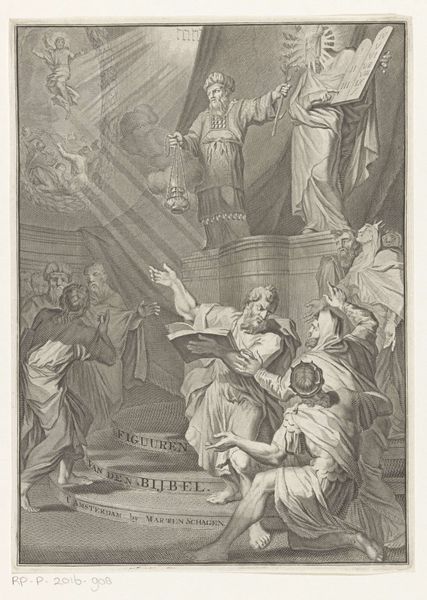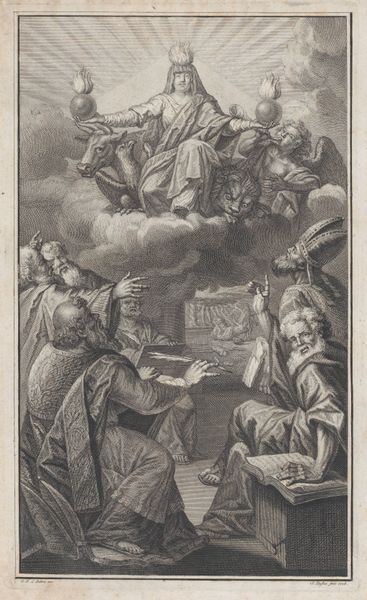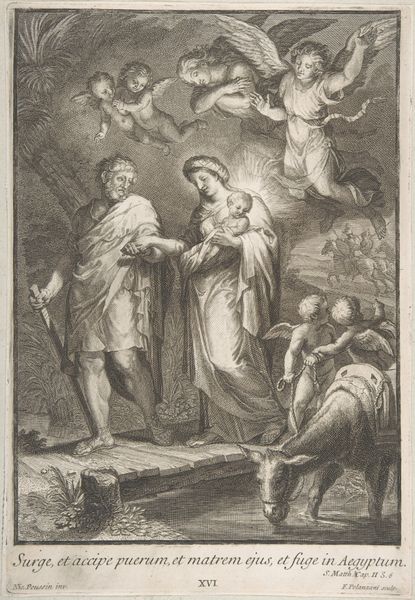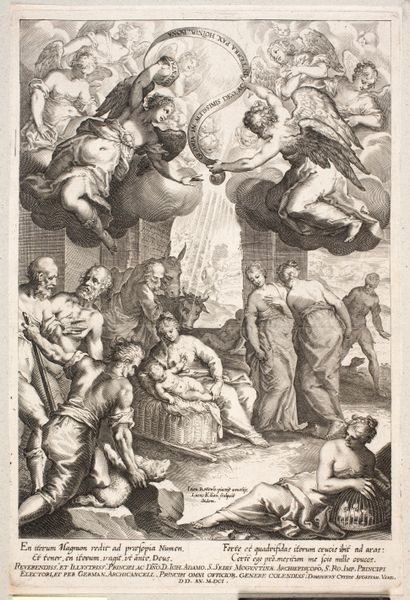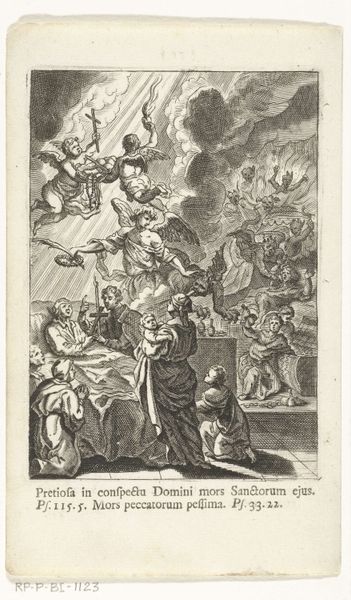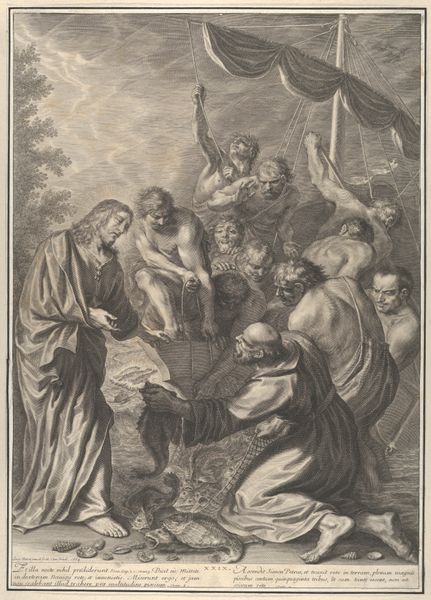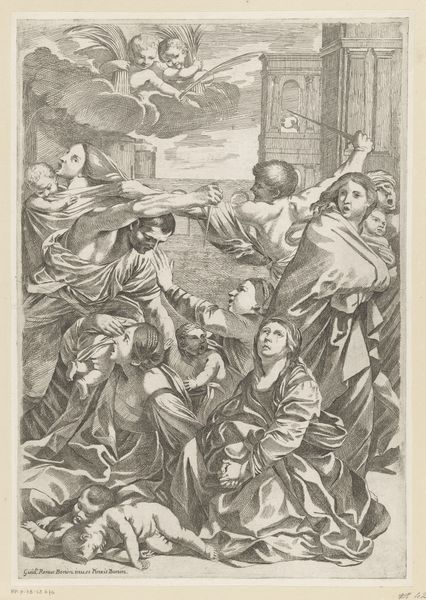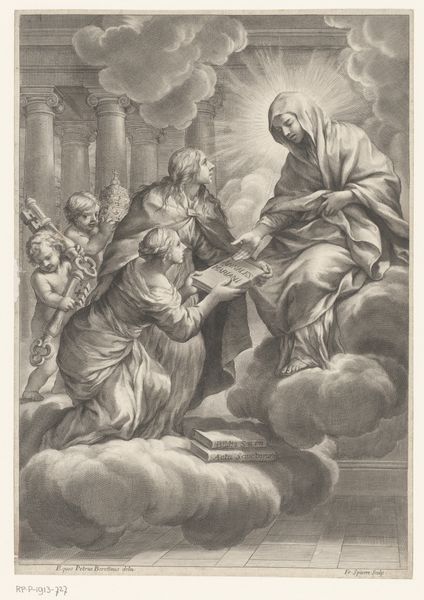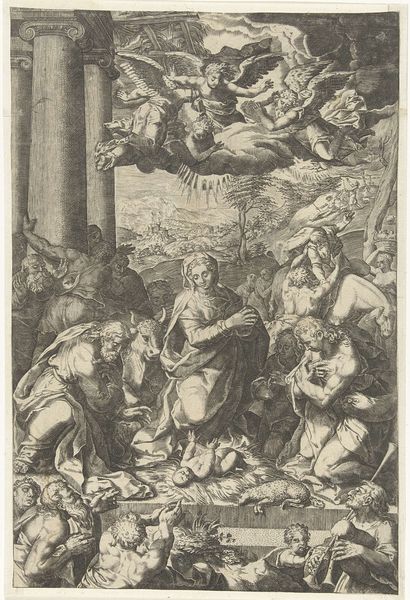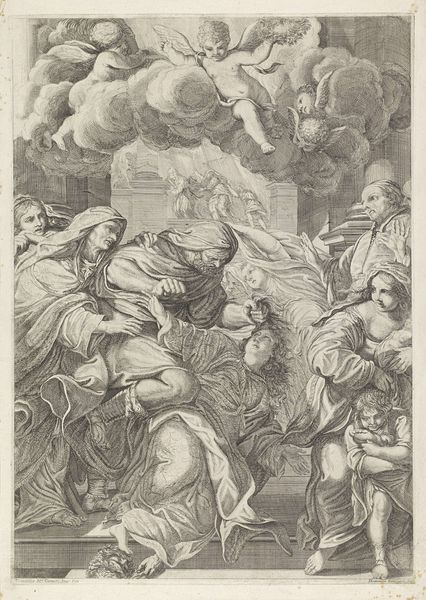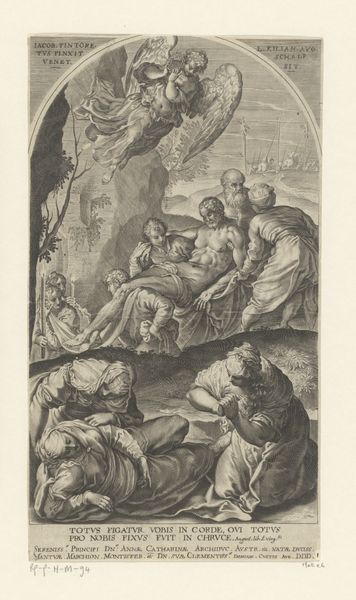
print, oil-paint, engraving
#
baroque
# print
#
oil-paint
#
old engraving style
#
mannerism
#
figuration
#
history-painting
#
italian-renaissance
#
engraving
Dimensions: height 545 mm, width 323 mm
Copyright: Rijks Museum: Open Domain
Editor: Here we have Michel Dorigny’s "Hemelvaart van Maria", created around 1647. It’s an engraving, and the first thing that strikes me is the contrast – the dramatic ascension against the bewildered faces below. What do you make of it? Curator: Ah, yes! It's as though Dorigny wants us to feel that earthly awe. Notice how the figures below are grounded in shadow and detailed textures, almost burdened, while above, Mary and her entourage of cherubic blurs ascend towards a brilliant, almost blinding, light. Does the composition feel, to you, a little like a visual seesaw, the sacred versus the mundane? Editor: Absolutely! It’s like two separate worlds on one page. Was this a common approach for depicting religious scenes at the time? Curator: In a way, yes, although the exuberance is Dorigny's own, infused with the spirit of Baroque and Mannerism. Italian Renaissance ideals of the human form also clearly influence it. Think of the swirling dynamism that Bernini was capturing in sculpture. The scene isn’t just about the event; it's about capturing the drama, the spectacle, and the raw human emotion in response to the divine. Doesn't that play on the emotions almost feel theatrical? Editor: I see what you mean. It's like a stage production. So, what have you taken away from this image? Curator: It's in seeing those human, flawed responses of disbelief or blind faith in the onlookers that you understand the true power of this representation. Editor: This piece highlights not just a theological moment, but it tells us of the spectrum of human responses to profound and unknowable happenings. Curator: Exactly!
Comments
No comments
Be the first to comment and join the conversation on the ultimate creative platform.
